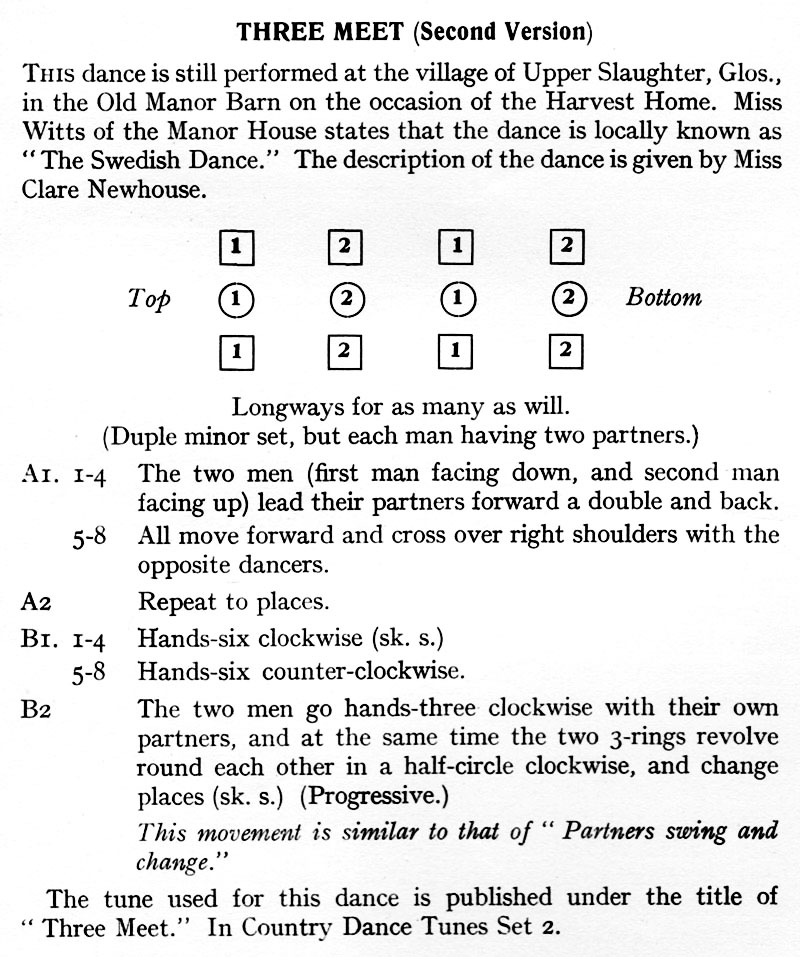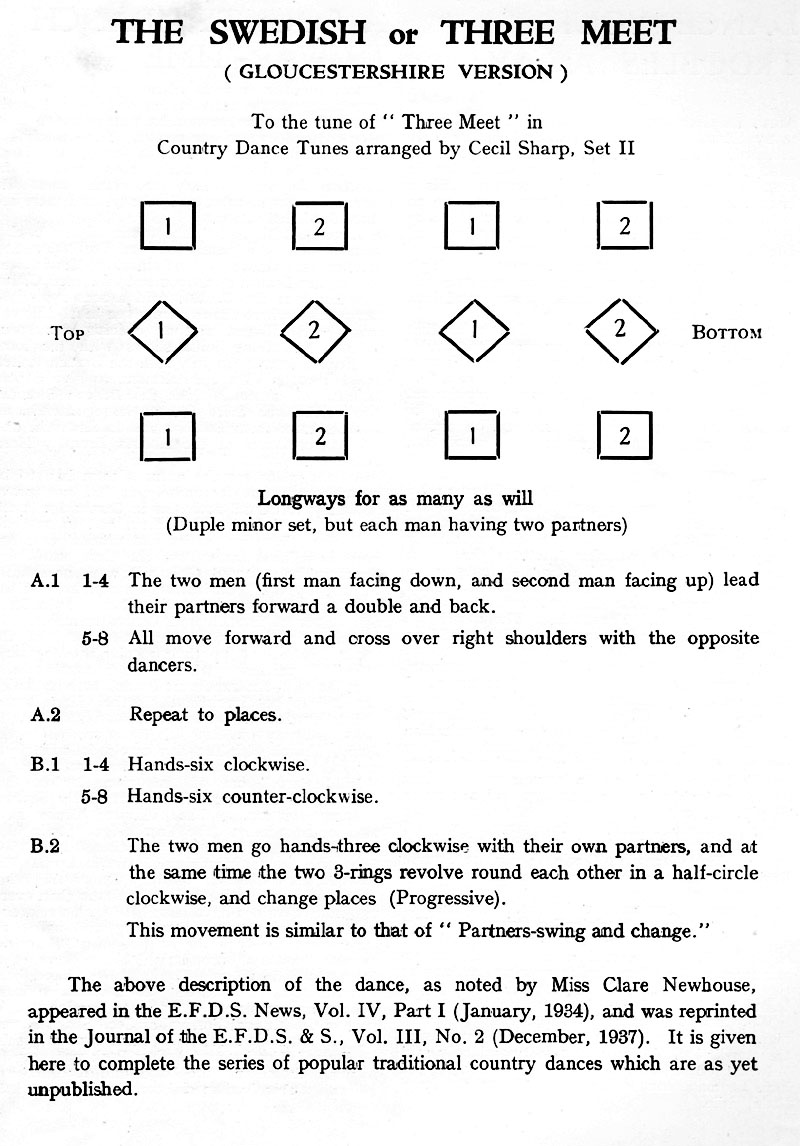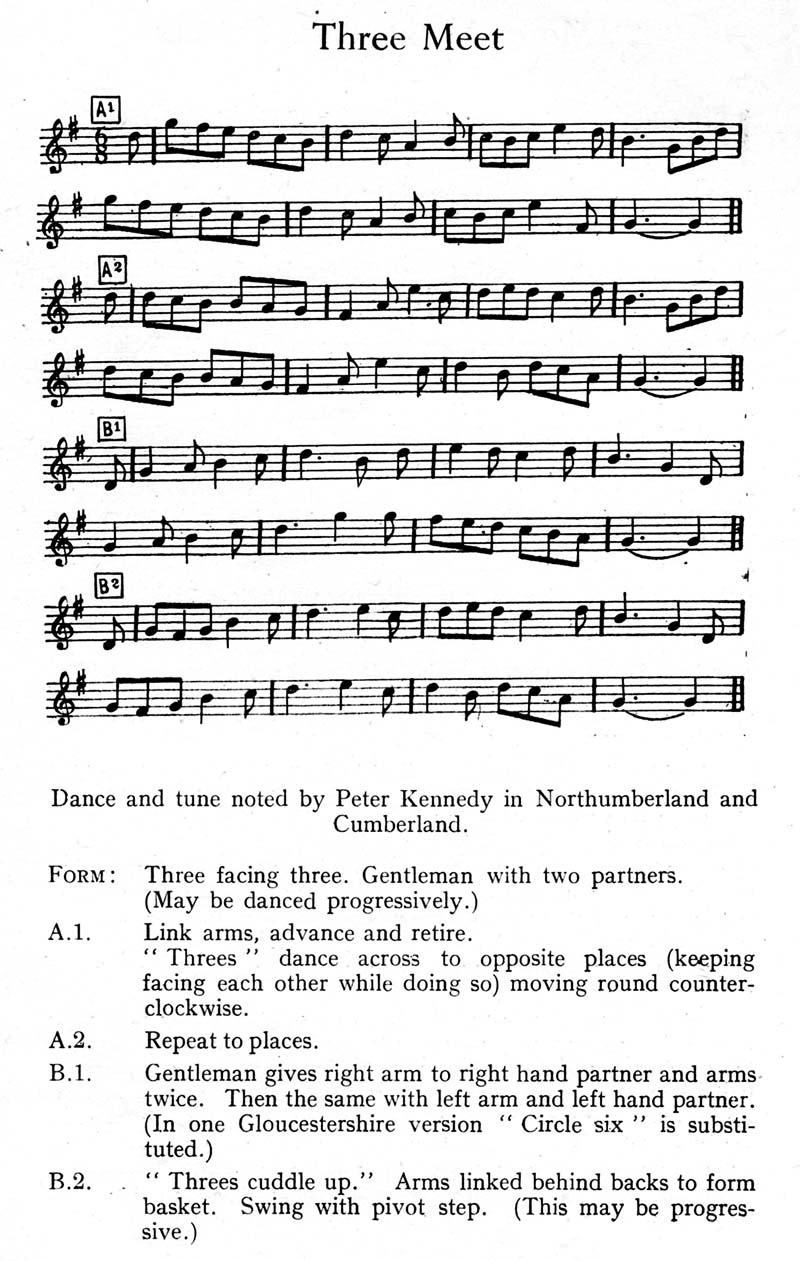Original page from E.F.D.S. News, January 1934

Original page from E.F.D.S. News, April 1934

Original page from English Dance & Song, July August 1940

Original page from English Dance & Song, September 1950

Back to Dance Index
| A1 |
Three Face Three Neighbours (with linked arms): Up a Double and Back
Cross Over with Neighbour by the Right Shoulder and turn to face them OR With linked arms, stay linked and Half Promenade |
| A2 | Repeat to Place |
| B1 |
All Six Circle Left; Circle Right (Slip)
OR Middle Dancer: Arm Right with Right Hand Dancer x2; Arm Left with Left Hand Dancer x2 |
| B2 |
In Threes: Circle Left: Make the two circles rotate around each other to change places - open out facing original direction
OR Make a Basket for Three and Spin (passing the other Basket AC for a Progressive Dance) |
| A1 | Three Men link arms & three Ladies link arms: Forwards a Double and Back twice |
| A2 | Double Cast & Back Up the set to Home (skip step) |
| B1 | #1s Lead Down, Turn Alone, Lead Up and Cast Down one place - #2s Move Up |
| B2 | #1s & #2s Partner Swing |




I'd love to hear from you if you know anything more about this dance, its composer, its style, or its history.
Feedback is very welcome on any aspect of these dances or Web pages.
Please contact John Sweeney with your comments.

THREE MEET (Second Version)
Tuts dance is still performed at the village of Upper Slaughter, Glos.,
in the Old Manor Barn on the occasion of the Harvest Home. Miss
Witts of the Manor House states that the dance is locally known as
“The Swedish Dance.” The description of the dance is given by Miss
Clare Newhouse.
|1| |2| |1| |2|
Top (1) (2) (1) (2) Bottom
|1| |2| |1| |2|
Longways for as many as will.
(Duple minor set, but each man having two partners.)
A1. 1-4 The two men (first man facing down, and second man
facing up) lead their partners forward a double and back.
5-8 All move forward and cross over right shoulders with the
opposite dancers.
A2 Repeat to places.
B1. 1-4 Hands-six clockwise (sk. s.)
5-8 Hands-six counter-clockwise.
B2 The two men go hands-three clockwise with their own
partners, and at the same time the two 3-rings revolve
round each other in a half-circle clockwise, and change
places (sk. s.) (Progressive.)
This movement is similar to that of “Partners swing and
change.”
The tune used for this dance is published under the title of
“Three Meet.”” In Country Dance Tunes Set 2.